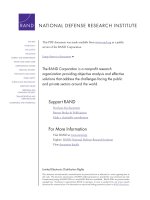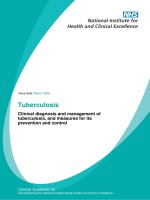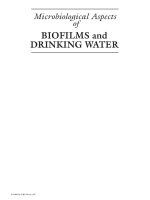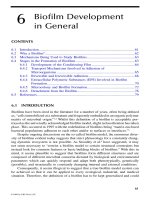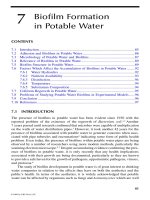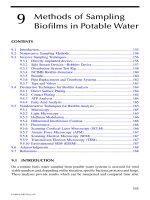Aspects of Contract and Negligence for Business Assignment 2
Bạn đang xem bản rút gọn của tài liệu. Xem và tải ngay bản đầy đủ của tài liệu tại đây (209.19 KB, 14 trang )
Nguyễn Thị Kiều Anh - Snow - F05014
BTEC HND IN BUSINESS (Accounting)
ASSIGNMENT COVER SHEET
NAME OF STUDENT
REGISTRATION NO.
UNIT TITLE
ASSIGNMENT TITLE
ASSIGNMENT NO
NAME OF ASSESSOR
SUBMISSION DEADLINE
VN: Nguyễn Thị Kiều Anh
EN: Snow
F05-014
Aspects of Contract and Negligence for Business
Negligence
2 of 2 (individual report)
Mr. John Andre
26 Dec 2013
I, ____Nguyen Thi Kieu Anh____ hereby confirm that this assignment is my own work and not copied
or plagiarized from any source. I have referenced the sources from which information is obtained by
me for this assignment.
________________________________
Signature
_______26 Dec 2013______
Date
---------------------------------------------------------------------------------------------------------------FOR OFFICIAL USE (Course Administrator)
Assignment Received By:
ACNB Assignment 2 Fall 2013-2014
Date:
1
Nguyễn Thị Kiều Anh - Snow - F05014
Unit Outcomes
Outcome
Evidence for the
criteria
Feedback
Assessor’s decision
First
attempt
Understand
principles of
liability in
negligence in
business
activities
Contrast liability in
tort with contractual
liability
3.1
Explain the nature of
liability in negligence
3.2
Explain how a
business can be
vicariously liable
3.3
Apply the elements of
the tort of negligence
and defences in
different business
situations
4.1
Apply the elements of
vicarious liability in
given business
situations.
4.2
Internal
Verification
Rework
LO3
Be able to
apply
principles of
liability in
negligence in
business
situations
LO4
Merit grades awarded
M1
M2
M3
Distinction grades awarded
D1
D2
D3
ACNB Assignment 2 Fall 2013-2014
2
Nguyễn Thị Kiều Anh - Snow - F05014
Outcome
Evidence for the
criteria
Feedback
Assessor’s decision
First
attempt
Internal
Verification
Rework
Assignment
( ) Well-structured; Reference is done properly / should be done (if any)
Overall, you’ve
Areas for improvement:
ASSESSOR SIGNATURE
DATE
/
/
DATE
/
/
NAME:.........................................................................................
(Oral feedback was also provided)
STUDENT SIGNATURE
NAME :..............................................................................
FOR INTERNAL USE ONLY
VERIFIED
YES
NO
DATE
: ...........................................................................
VERIFIED BY : ...........................................................................
NAME
: ...........................................................................
NEGLIGENCE
ACNB Assignment 2 Fall 2013-2014
3
Nguyễn Thị Kiều Anh - Snow - F05014
Prepared for:
Lecturer, Mr. John Andre
Aspects of Contract and Negligence for Business
Banking Academy, Hanoi
BTEC HND in Business (Finance)
Prepared by:
Nguyễn Thị Kiều Anh - Snow - F05A
Registration No: F05-014
No of words: 2563
Submission date: 26 December, 2013
TABLE OF CONTENTS
ACNB Assignment 2 Fall 2013-2014
4
Nguyễn Thị Kiều Anh - Snow - F05014
INTRODUCTION
In this report, I play role as business consulting firm for Mug-n-Sas, LTD - an electronics
retailer in London. My responsibility is giving some advices for Honky Uh Now, the CEO of
Mug-n-Sas on several legal issues. Through analyzing issues related to business law in
specific company, readers can understand deeply about liability in tort, contractual liability,
tort of negligence and defences as well as principles of vicarious liability and its important
roles. This report is divided into 3 tasks as follows:
•
Task 1: Contrast liability in tort with contractual liability.
•
Task 2: Explain the nature of liability in negligence and apply the elements of the tort
of negligence and defences.
•
Task 3: Explain how a business can be vicariously liable and apply the elements of
vicarious liability.
ACNB Assignment 2 Fall 2013-2014
5
Nguyễn Thị Kiều Anh - Snow - F05014
I write this report based on information in the Business Law course book and some reference
books, many sources from internet. Moreover, many slides which were continuously updated
every week by lecturer John also help me collect information, theory, and case study in order
to support applying for situations of Mug-n-Sas Company.
CONTENTS
Task 1: Contrast liability in tort with contractual liability (3.1)
Before finding out about elements of tort of negligence and defences in business situation, it
is necessary to understand the differences between tortious liability and contractual
liability as follows:
Characteristic
Tortious liability
Contractual liability
s
Legal obligation of wrongdoer to a Legal obligation only exist when
victim as a result of civil wrong, anyone two parties bound in the contract,
Definition
has suffered damages has right claim for a party just has right to claim the
compensation which related to personal other for the loss, damage when
injury, property damage or economic they has somehow breached the
Relationship
loss (answers, n.d.)
contract (answers, n.d.).
The defendant may not have any The defendant and claimant must
between
previous transaction or relationship with be the parties to the contract
ACNB Assignment 2 Fall 2013-2014
6
Nguyễn Thị Kiều Anh - Snow - F05014
defendant and
claimant
Duty
the claimant The third party can Only parties in the contract can
sued or be sued which related directly to sue and be sued (btecexpert,
the negligence (btecexpert, 2009).
2009).
- Are usually owned to people in - Are usually only owed to the
general
-
Is fixed by the law (Elliot & Quinn, - Based on term in contract
2009)
Limitation Act 1980
-
•
(Elliot & Quinn, 2009)
Limitation Act 1980 claims for
Claims for negligence: the later of 6 breach of contract
years from the date the damage is - For a simple contract: 6 years
Limitations of
actions
other contracting party
suffered
-
from the date of the breach
Claims for personal injury: 3 years - For a deed: 12 years from the
from the date of injury is suffered
date of the breach (Beale,
(Beale, 2013).
2013).
Tortious liability
The case Donoghue v Stevenson [1932] below is an example of liability in tort.
The facts: A purchased a dark, opaque bottle of ginger-beer from a retailer and gave it to
B - friend of A. B drank some before her friend discovered a decomposed snail in the
bottle. She sued C, the manufacturer for psychological harm (shock) and gastroenteritis
(stomach flu). The manufactures argued that as there was no contract between himself
and B, he owned her no duty of care and so was not liable for her.
Decision: C was liable to B. In supplying polluted ginger-beer in an opaque bottle, the
manufacturer must be held to contemplate that the person who drank the contents of the
bottle would be affected by the consequences of the manufacturer’s failure to take care to
supply his product in a clean bottle.
→
Manufactures of defective products owed duty of care with end consumer of that product
although consumers do not have the contract directly with manufacturer. They must to
have liability for victim by the law (consumer protection) (BPP, 2010).
•
Contractual liability
The case Carlill v Carbolic Smoke Ball Co [1893] below is an example for contractual
liability.
The facts: The defendant, a medicine manufacturer, publishing an advertisments: a reward
£100 to any person stills influenza after using the smoke ball according to printed
direction. Moreover, £1,000 had been deposited at a bank to show company’s sincerity in
ACNB Assignment 2 Fall 2013-2014
7
Nguyễn Thị Kiều Anh - Snow - F05014
this matter. The claimant purchased and used the smoke ball as directed but still flu. She
claimed for £100.
Decision: The advertisment of the Carbolic company to the public was an offer and the
purchasing and using ‘smoke ball’ of Carlill was acceptance, which formed contract.
Carbolic Company has to pay £100 for Carill as the contract’s terms.
→
There is the existence of a contract between customer and company. When binding to
the contract, customer has right to sue company for not follow what they stated in the
contract and company was liable for contract’s terms by compensating £100 for
customer.
Task 2: Explain the nature of liability in negligence (3.2) and apply the elements of the
tort of negligence and defences (4.1)
Negligence is a civil wrong whereby a person or party is in breach of a legal duty of care to
another which results in loss or injury to the claimant (dictionary, 2013). There are many
elements of negligence such as duty of care, strict liability, contributory negligence….With
each element, it has the different nature of liability.
To succeed in an action for negligence the claimant must prove 3 things:
-
The defendant must owe the claimant a duty of care: the courts will decide whether
defendant owed a duty of care or not by applying some tests such as reasonably
foreseeable, proximity, fair, just and reasonable…
-
The defendant must breach that duty of care: The claimant must prove the defendant
breach the duty of care.
-
The failure must cause damage to the claimant: The claimant also has to prove for
the damages they suffered such as personal injury, damage to property, economic
loss… (Elliot & Quinn, 2009).
1. Duty of care
Duty of care is the responsibility or the legal obligation of a person or organization to
avoid acts or omissions (which can be reasonably foreseen) to be likely to cause harm to
others (businessdictionary, 2013).
Liability for economic loss
Damages for economic loss are personal injury and damage to property, in which both
physical damages to property and economic loss happens by damages to property (Elliot &
Quinn, 2009).
ACNB Assignment 2 Fall 2013-2014
8
Nguyễn Thị Kiều Anh - Snow - F05014
Figure 1: Negligence and economic loss (Elliot & Quinn, 2009)
The case Spartan Steel v Martin [1972] illustrated clearly liability for economic loss. The
defendants had negligently cut an electric cable, causing a power cut that lasted for 14
hours. The claimant sued for:
-
Damage to the metal that was in the furnace at the time of the power cut (physical
damage to property);
-
Loss of the profit that would have been made on the sale of that metal (economic loss
arising from damage to property);
-
Loss of profit on metal which would have been processed during the time the factory
was closed due to the power cut (pure economic loss)
The court held that the first two claims were recoverable but the third was not. The
defendants owed the claimants a duty to pay for any loss directly arising from such damage
but they did not owe them any duty with regard to loss of profit.
The duty of care is applied in the case of Paul v Mug-n-Sas, Mug-n-Sas breached the duty
of care when they provided a defective phone for their customers, which caused fatal shock
of Suzi. Moreover, Mug-n-Sas can foresee the damage of defective products to the
customers. Therefore, Mug-n-Sas owed the duty of care to customers and must have
liability for their negligence.
Mug-n-Sas must pay £25,000 for funeral because of providing defective phone which
caused death of Suzi. The fact is that Mug-n-Sas did not regularly audit the products to
catch the manufacturing problem, which lead to defective phone. This serious problem will
continue occurring if they still continue ignoring audit. Therefore, Mug-n-Sas have to pay
£1 million in exemplary damage for deterring Mug-n-Sas and other company from
similar mistakes in the future. Paul, husband of Suzi will not win for £1 million which he
estimated that his wife would have made over the lifetime plus because Paul does not
suffer the damage, moreover the amount of money Suzi can earn if she alive, it is Suzi’s
money, not Paul’s money. Therefore, Paul does not have right to claim for that.
ACNB Assignment 2 Fall 2013-2014
9
Nguyễn Thị Kiều Anh - Snow - F05014
2. Strict liability
Strict liability is a tort law concept that imposes liability for harm suffered without
requiring proof of negligence. Strictly by owning a dangerous animal, an owner may be
found liable if that animal ever escapes and causes damage or harm. It does not matter if
the owner has taken all the typical precautions (definitions, n.d.).
A defendant who negligently creates or allows the creation of risk of danger may be liable
even though a third party’s actions cause that danger to injure the claimant (Elliot & Quinn,
2009). The case of Haynes v Harwood [1935] is example for strict liability. The defendant
left a horse-drawn van unattended in a crowed street. The horses bolted when a boy threw a
stone at them. A police officer tried to stop the horses to save a woman and children who
were in the path of the bolting horses. The police officer was injured. It was held that the
defendant owned a duty of care as he had created a source of danger by leaving his horses
unattended in a busy street.
In the case scenario Apple v Mug-n-Sas, Apple owed a duty of care as they create risk of
danger by carrying nitro-glycerin - an explosive material. Therefore, they must be strictly
liable for damages that explosive materials caused although damages also derived from
negligence of Mug-n-Sas employee. Apple will get nothing from Mug-n-Sas and have to
pay £100,000 worth of damage.
3. Contributory negligence
If both the claimant and defendant are found to be negligent, any damages or blame will be
divided between them. Courts use actual percentages to determine responsibility in
contributory negligence cases (nelson, 2013).
The courts may reject a claim for contributory negligence if the claimant suffered
damage whilst engaged in illegally activity (BPP, 2010). An example of this case is
Ashton v Turner [1981], where both claimant and defendant had taken part in a burglary.
The defendant had the job of driving the getaway car, but did it so badly that the claimant
was injured. The claimant attemped to sue his co-burglar for the injury, but the court held
that the defence of illegally could apply to prevent the claim.
In the case scenario Tom v Mug-n-Sas, Tom’s claim for contributory negligence because
of the exposed wire is rejected because Tom suffered damages when he do illegal act
(broke into Mug-n-Sas stores in order to steal new Iphone 6). He can foresee risk of danger
when he entered through the roof by cutting a hole and climbed down by the rope. Tom
ACNB Assignment 2 Fall 2013-2014
10
Nguyễn Thị Kiều Anh - Snow - F05014
will get nothing and must pay £4,000 to replace the TV’s he destroyed and another
£3,000 to repair the roof for Mug-n-Sas.
Task 3: Explain how a business can be vicariously liable (3.3) and apply the elements of
vicarious liability (4.2)
In order to understand deeply how a business can be vicarious liable, we should find out
differences between employer liability and vicarious liability because there are some
confuses about these two things:
•
Employer liability: Employers may be held liable for the health and safety of their
employees while they are at work (businessdictionary, n.d.). For example, employer
will be liable for employee when they do not provide a safe workplace which cause
personal injury to employee while working.
•
Vicarious liability: imposes responsibility upon employer for the failure or omissions
of employee, provided it can be shown that they took place in the course of their
employment (acas, n.d.). For instance, the employer will be liable for employee’s
actions when they injures customer within the course of employment.
In order for vicarious liability to apply, the courts must ask two questions:
•
Was the person who committed the tort an employee of the defendant?
•
Was the tort committed in the course of that person’s employment?
Employers are only liable if the answer to both questions is yes (Elliot & Quinn, 2009).
1. Relationship of employer and employee
In terms of vicarious liability, it is essential to establish exactly who is classed as an
“employee”. Employers are liable for torts committed by their employees, but not for those
commited by independent contractor who does not work regularly for employer. An
independent contractor is under control of his employer on what he must do so the
employer can not control the actual manner in which he does work. He is free his own
method so they are usually responsible for their own torts (Matter, 2013).
2. Torts are committed in the course of employment
An employer will be responsible for torts committed by their employees if those torts are in
the course of the employment. The employer will be liable not only where they have
permitted the employee to do the wrongful act, but also in some cases where they have not
given such permission (Elliot & Quinn, 2009).
The case Limpus v London General Omnibus Co. [1862] is example for vicarious liability.
A bus driver racing to a stop to collect passengers deliberately obstructed the driver of a bus
ACNB Assignment 2 Fall 2013-2014
11
Nguyễn Thị Kiều Anh - Snow - F05014
of a rival company, overturning the latter’s vehicle. The bus driver had been given strict
instruction against obstructing other buses. The defendants were liable. The driver was acting
within the course of his employment at that time. It was immaterial whether his act is
forbidden.
In the case Henrietta v Mug-n-Sas, Mug-n-Sas owe no vicarious liablility so the company
will not be liable for compensating £10,000 for the cost to replace her necklace because
actions of Won Ton are not related to the course of his employment. The task of Won Ton is
to deliver and install a new LED TV, not drinking tea which create good opportunity for Won
Ton stole necklace of Henrietta.
Mug-n-Sas owe vicarious liability in the case Vidia v Mug-n-Sas, Mug-n-Sas will be liable
for paying £600 for the cost to replace the phone because actions of employee was seen as
one long time from he took purse of Vidia to when she complaint and receive the purse back
which stated that Mug-n-Sas’s employee was doing his job. However, Mug-n-Sas will not
seek exemplary damages of £1,000 because Vidia did not give out evidence to prove that the
employee of Mug-n-Sas do this sort of thing all the time.
CONCLUSION
Through this report, I can understand deeply about tort of law and how to distinguish tortious
liability and contractual liability by analyzing the specific real case. Moreover, many
elements of tort of negligence such as duty of care, strict liability, and contributory
negligence are mentioned in order to find out the nature of negligence and know how to deal
for each specific case. This report also finds out the differences between employer liability
and vicarious liability in order to identify how the business can be vicarious liable. Through
above analysis, I hope readers also get the useful information to support for their needs.
ACNB Assignment 2 Fall 2013-2014
12
Nguyễn Thị Kiều Anh - Snow - F05014
REFERENCES
acas, n.d.. Understanding what vicarious liability means for employers. [Online]
Available at: />[Accessed 15 December 2013].
answers, n.d.. Briefly compare and contrast tortuous liability and contractual liability.
[Online]
Available at:
/>_liability#slide2
[Accessed 1 December 2013].
Beale, 2013. Statutory Limitation Periods. [Online]
Available at: />_Making_Sure_the_Time_is_Right_May_13_.pdf
[Accessed 1 December 2013].
BPP, 2010. In: Business Law. London: BPP Learning Media Ltd.
btecexpert, 2009. Compare contrast Tort and Contract. [Online]
Available at: />[Accessed 1 December 2013].
ACNB Assignment 2 Fall 2013-2014
13
Nguyễn Thị Kiều Anh - Snow - F05014
businessdictionary, 2013. The duty of care. [Online]
Available at: />[Accessed 14 December 2013].
businessdictionary, n.d.. Employer liability. [Online]
Available at: />[Accessed 15 December 2013].
definitions, n.d.. Strict liability law & legal definition. [Online]
Available at: />[Accessed 15 December 2013].
dictionary, 2013. Negligence. [Online]
Available at: />[Accessed 14 December 2013].
Elliot & Quinn, 2009. In: Contract Law. United Kingdom: Pearson Education Limited.
Matter, T. S., 2013. Vicarious liability in tort. [Online]
Available at: />[Accessed 15 December 2013].
nelson, 2013. Negligence and other torts. [Online]
Available at: www.nelson.com/aal/documents/Chapter12.ppt
[Accessed 15 December 2013].
ACNB Assignment 2 Fall 2013-2014
14

